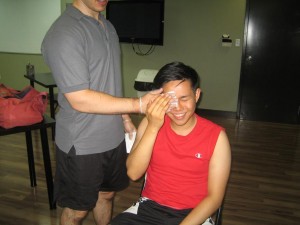A stye is an infection that affects the eyelids. Once bacteria is present, it can enter and infect the oil gland of the upper and lower eyelids which leads to pain, inflammation and redness of the eyelids. The surrounding areas of the eyelid and tissues of the cheek can also be affected.
[youtube url=”https://www.youtube.com/watch?v=UXvAenHuhHs”]A lump will develop with a white or yellow spot that looks similar to a pimple. Usually, swelling can be seen on one eyelid, but most cases can happen in one or both eyelids concurrently. The lump just disappears when the clogged opening of the gland is relieved and when pus is drained out from the syte.
What are the causes
- A stye can be caused by poor eyelid hygiene
- Incomplete and incorrect removal of eye makeup
- Using expired or contaminated cosmetics
- Inflammatory diseases of the eyelid such as blepharitis, acne rosacea and meibomitis
- Hormonal changes and stress
Indications of a stye
- A small irritated bump develops on the eyelid or at the base of an eyelid
- Sensitivity to light

Redness, tenderness, pain and swelling in the eyelid - Redness, tenderness, pain and swelling in the eyelid
- Watering or irritation of the affected eye
- Discomfort when blinking
- Presence of small yellowish spots at the center of the stye
- Swollen eyelid
- Tenderness of the lump when touched
- Crusting of the eyelid margins
- Mucous discharge from the eye
- Blurred vision
- Droopiness of the eyelid
- Scratchy sensations on the eyeball
Treatment
- Most styes heal on their own in 2-3 days, but they can be irritating and painful. Keep the eye clean as much as possible and close the eyes when washing the face. Gently scrub the eyelid using tap water with a mild, non-irritating soap or shampoo.
- Apply a warm compress for at least 15 minutes at a time for 4-6 times every day for fast drainage. Close the eyes when applying the warm compress. Heat helps lessen the inflammation and pain and encourages fast healing of the condition
- Avoid puncturing or squeezing the stye to prevent making the condition from worsening.
- Stop wearing contact lenses while the stye is still present.
- Take over-the-counter pain and anti-inflammatory medications to lessen the pain and inflammation.
- Avoid picking on the stye and allow the stye to open on its own. After some time, the stye will begin to shrink and disappear. It may also open and drain on its own. Soak up any discharge using a clean cloth and clean the wound using a mild shampoo and water. Hold clean gauze on the eye to soak up further drainage.
- Avoid rubbing the eyes since even clean hands can cause further irritation on the eyes.
Tips
- Avoid wearing contact lenses if the stye is still present to prevent further irritation of the area.
- Avoid pressing or squeezing the lump.
- Avoid wearing make up to prevent irritation. There is a high risk of spreading the condition by using make up.
- Minimize strain on the eyes such as excessive use of the computer and reading under poor lighting conditions.
